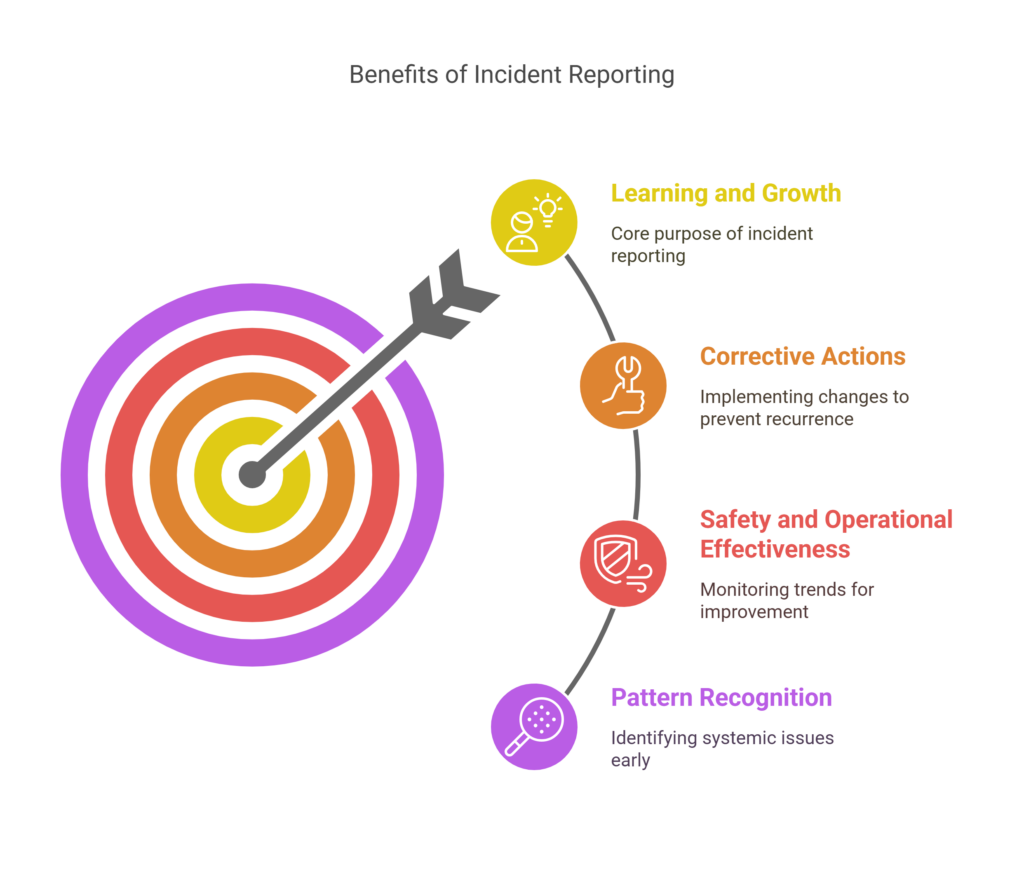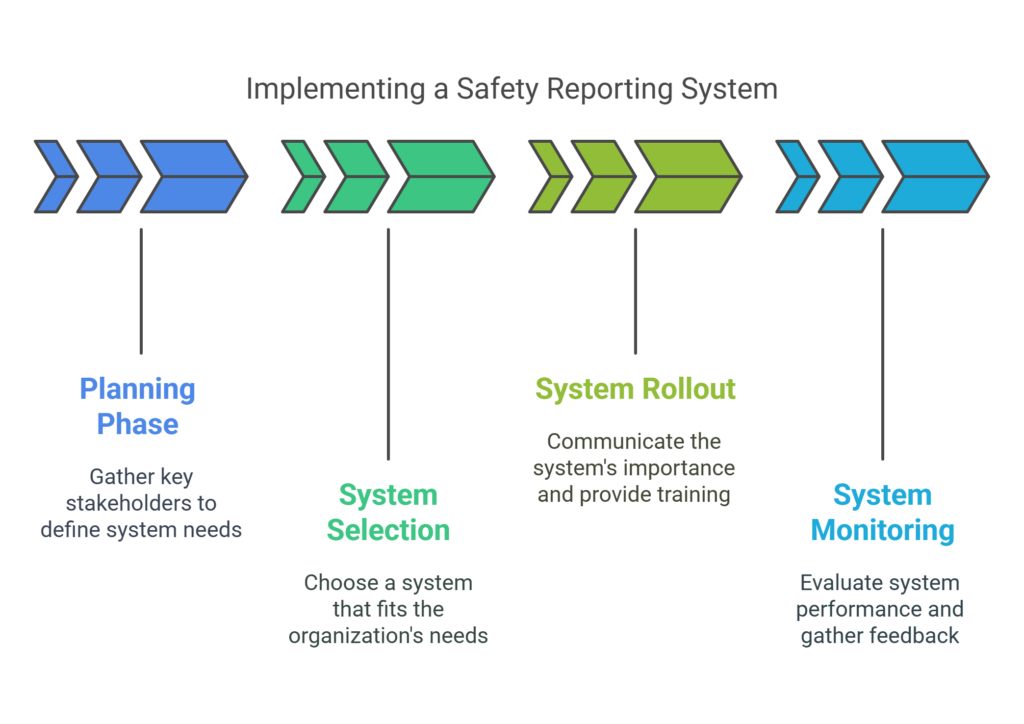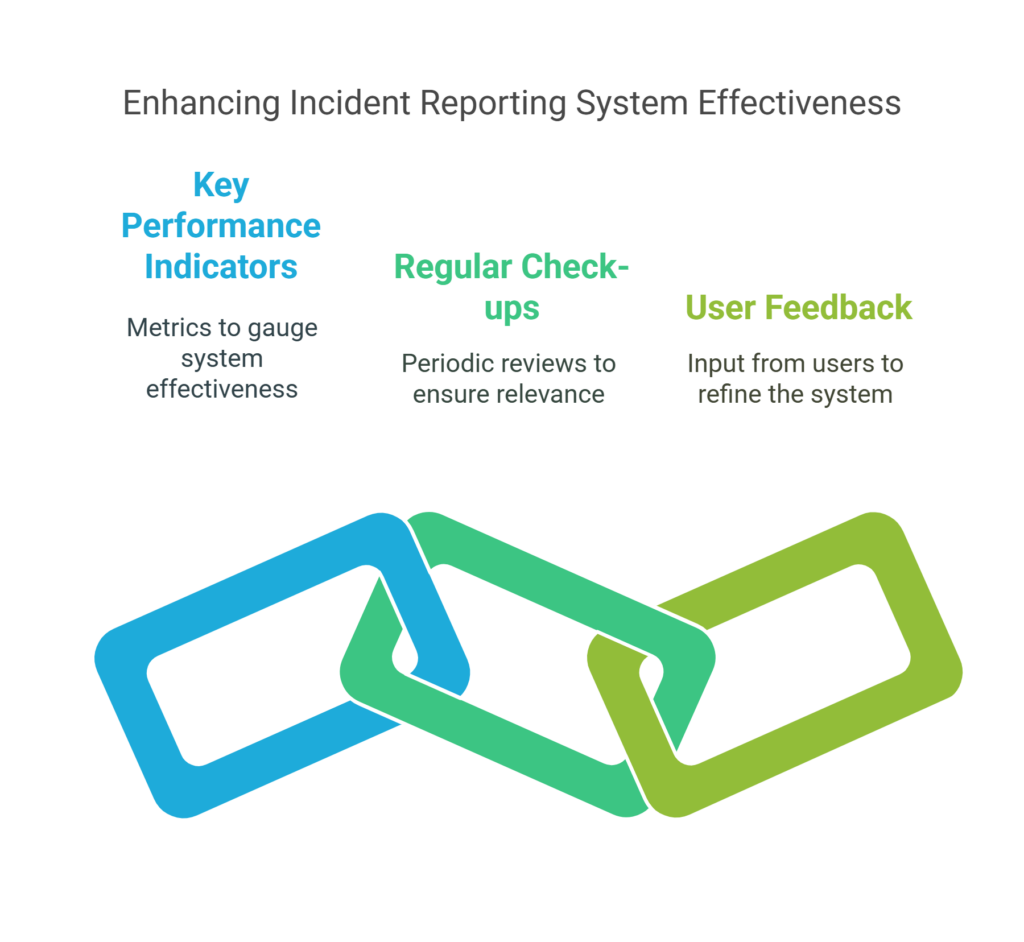Workplace incidents can really set organizations back, costing billions collectively each year. But here’s some good news: studies suggest that companies with solid reporting systems can actually cut down harmful events by as much as 30%! Even with this clear upside, many places still find it tricky to get effective incident reporting processes off the ground. This piece digs into how incident reporting systems are much more than just checking a regulatory box—they are smart tools that boost workplace safety, lift employee spirits 😊, and make the whole organization run smoother. You’ll find out about the essential parts of good reporting systems, ways to put them in place that genuinely stick, and how to leverage incident data to stop problems before they happen again. Whether you want to spruce up your current system or start fresh, these ideas will guide you in fostering a reporting culture that looks after your people and your business.
What Is an Incident Reporting System?
So, what exactly *is* an incident reporting system? Think of it as a structured method for logging, tracking, investigating, and learning from unexpected events within your organization. These systems are set up to spot and handle situations that have caused harm, or even those ‘near misses’ that had the potential to cause trouble. It’s about creating a formal channel to capture details about anything that deviates from normal, safe operations.
The main goal here is pretty straightforward: help management get a clear picture of problems happening in the workplace. By collecting information on incidents, big or small, leaders can pinpoint weaknesses. This understanding is the first step towards developing smarter processes and safer procedures, ultimately preventing future harm and improving how things get done.
Typically, the process involves someone spotting an incident (or near miss) and reporting it through a defined channel – maybe a form, an app, or a dedicated software. This report is then documented, reviewed, and often investigated to understand the root cause. The real magic happens next: the lessons learned from the investigation are used to make improvements across the organization, closing safety gaps and refining operations. 🔁
“An Incident Reporting System (IRS) is a way to report, document, investigate, and use the learning from incidents within the organization. It is ideal for identifying, reporting, and quickly managing any incidents or occurrences in a health service delivery that cause harm or have the potential to cause harm to patients.” -PMC National Library of Medicine
The Importance of Incident Reporting in Organizations
Why fuss over incident reporting? Because it’s fundamental to learning and growth. When something goes wrong, reporting it isn’t about pointing fingers; it’s about understanding *why* it happened. This insight allows organizations to put corrective actions in place, making it much less likely that the same mistake will happen down the line. It turns mishaps into valuable lessons learned. 🤓
Incident reporting also acts like a progress tracker for safety and operational effectiveness. By consistently logging incidents, companies can monitor trends over time. Are certain types of incidents decreasing after a new safety measure was introduced? Is a particular department showing improvement? This data offers concrete evidence of what’s working and where more attention is needed.
Furthermore, these systems are fantastic at spotting patterns and recurring issues. A single, seemingly minor incident might not raise alarms, but when the reporting system shows ten similar incidents over six months, it signals a potential systemic problem. Maybe a piece of equipment is faulty, a process is flawed, or more training is required. Without reporting, these trends might go unnoticed until a major event occurs. 📈

Ultimately, the data gathered through incident reporting significantly sharpens risk management strategies. Knowing where incidents are happening, why they’re happening, and how severe they are allows organizations to allocate resources more effectively. It supports better-informed planning and proactive measures, moving safety management from a reactive guessing game to a data-driven strategy.
“Incident reporting helps companies identify trends, analyze the root cause of an incident, and make necessary adjustments to prevent similar incidents from occurring.” -Riskonnect
Core Components of Effective Incident Reporting Systems
What makes an incident reporting system truly effective? It boils down to a few key ingredients. First, you need clear and accessible reporting mechanisms – ways for anyone to easily report an incident when they see one. Next comes a structured investigation process to dig into the ‘why’ behind the report. Finally, robust documentation standards ensure that all relevant information is captured consistently and accurately for analysis and future reference. 📝
Ease of use is paramount. If reporting is complicated or time-consuming, people simply won’t do it. A good system should have intuitive interfaces that work seamlessly whether someone is reporting from a desktop in the office, a tablet on the factory floor, or a smartphone out in the field. Accessibility ensures that reporting can happen promptly, right when details are fresh.
Automation can also be a game-changer. Think automated workflows that route reports to the right people, notifications that keep stakeholders in the loop 📧, and clear escalation procedures for serious incidents. These features ensure that reports don’t fall through the cracks and are addressed in a timely manner, making the whole process more efficient and reliable.
“The reporter entered information using the patient’s medical record number, identified the event, and provided a narrative describing the patient safety incident using facts. Incident investigators at the hospital were informed of an incident report by email and could forward reports to other departments for further investigation.” -PMC National Library of Medicine
Benefits of Implementing an Incident Reporting System
Let’s talk perks! The biggest win from a solid incident reporting system is stopping future problems in their tracks. By meticulously documenting what happened and identifying patterns, organizations gain the foresight needed to fix underlying issues, preventing costly or harmful recurrences. It’s proactive protection at its best.🛡️
Keeping up with rules and regulations is another major plus. Many industries have mandatory reporting requirements. An effective system ensures you meet these obligations, helping you avoid hefty fines or legal headaches. It also clearly demonstrates your organization’s commitment to operating safely and responsibly.
These systems are powerful catalysts for improving the overall workplace safety culture. When employees see that reporting hazards or incidents leads to positive changes and isn’t met with blame, they become more engaged in safety. It encourages everyone to keep an eye out and speak up, fostering a shared sense of responsibility. 👍
Don’t underestimate the impact on employee morale and trust. A transparent reporting process where incidents are handled seriously and fairly shows employees that their well-being is valued. Knowing that their concerns will be heard and acted upon builds confidence in management and strengthens loyalty.
Finally, incident reporting can actually save money. By preventing accidents, reducing equipment damage, minimizing downtime, and avoiding potential legal fees or insurance hikes, the system directly contributes to the bottom line. It improves organizational efficiency by streamlining how issues are identified, addressed, and resolved. 💰
“The primary benefit of thorough incident reporting is the prevention of future incidents. By accurately documenting the details of each incident, businesses can identify patterns and root causes.” -C&C Consulting
Implementing an Incident Reporting System: Best Practices
Ready to get started or improve your system? The first step is careful planning. Bring key people to the table – safety officers, department managers, HR, IT, and importantly, frontline staff representatives. Figure out what you need the system to do, what types of incidents you need to track, and what your reporting goals are. A thorough needs assessment sets the stage for success. 🗺️
When choosing a system (or designing your own), focus on features that match your goals and how your team works. Look for ease of use, mobile accessibility, good reporting capabilities, and maybe those automated workflows we talked about. Don’t just pick the flashiest option; pick the one that best fits *your* organization’s unique context and requirements.
Rolling out the system requires clear communication and proper training. Everyone needs to understand *why* the system is important, *how* to use it correctly, and *what* happens after a report is submitted. Ongoing training and reminders can help keep reporting top-of-mind and ensure everyone feels comfortable using the tools provided. 📣
Once the system is live, don’t just set it and forget it. Regularly monitor its performance. Are people using it? Are reports being addressed promptly? Are you seeing improvements in safety metrics? Collect feedback and be prepared to make adjustments. Continuous evaluation ensures the system stays effective and relevant.

Overcoming Common Challenges in Incident Reporting
Even with the best intentions, getting incident reporting right can hit some snags. A major hurdle is often fear – employees worry they’ll be blamed or punished if they report an incident, especially if they were involved. Another challenge is overly complex reporting procedures that feel like a chore, or simply not having enough time during a busy workday. ⏳
Creating a ‘no-blame’ culture is crucial to overcoming fear. Leadership must consistently emphasize that reporting is about learning and improving, not about finding fault. Frame incidents as opportunities for system enhancement. When people feel safe reporting mistakes or hazards, reporting rates naturally increase, providing more valuable data.
To tackle complexity and time constraints, simplify the reporting process as much as possible. Use intuitive forms, allow for quick reporting via mobile devices, and integrate reporting into existing workflows where feasible. If reporting feels like a natural part of the job rather than an extra burden, people are far more likely to participate. Make it easy! ✨
Using Incident Data for Continuous Improvement
Collecting incident reports is just the beginning; the real value comes from analyzing that data. Look for patterns: Are certain types of incidents happening frequently? Do they cluster in specific locations or departments? Are near misses increasing? Identifying these trends highlights areas needing focused attention and resources for improvement. 🧐
Use these insights to guide your decisions and prioritize actions. If data shows a spike in slips and falls in a particular area, that becomes a clear priority for investigation and corrective measures. Incident data provides objective evidence to support safety investments, justify process changes, or develop targeted training programs.
Don’t keep the findings and actions to yourself! Communicate back to your teams what was learned from incident reports and what improvements are being made. This closes the loop, shows employees their reporting makes a difference, and reinforces the value of the system. Transparency maintains engagement and demonstrates a commitment to getting better together. 🗣️
“Incident reports can help companies identify patterns of recurring issues or trends that may be indicative of a larger problem. This allows companies to take corrective measures and prevent costly incidents from happening in the future.” -Riskonnect
Industry-Specific Applications of Incident Reporting
In healthcare, incident reporting is absolutely vital for patient safety. Reporting systems track medication errors, patient falls, hospital-acquired infections, and near misses. Analyzing this data helps hospitals and clinics refine protocols, improve staff training, and ultimately deliver safer, higher-quality patient care. 🩺
For manufacturing and industrial settings, the focus is often on worker safety and operational continuity. Incident reporting tracks equipment malfunctions, safety procedure violations, injuries, and environmental spills. This information is key to identifying hazards, preventing accidents, reducing downtime, and ensuring smooth, efficient production processes. ⚙️
The transportation industry relies heavily on incident reporting for accident prevention and meeting strict regulatory requirements. Reports cover vehicle accidents, driver fatigue issues, maintenance oversights, and loading/unloading mishaps. Data analysis informs driver training, vehicle maintenance schedules, and route planning to enhance safety on the roads, rails, or in the air. 🚚✈️
Even in service industries like retail or hospitality, incident reporting plays a role. It can track customer accidents (like slips and falls), security incidents, food safety issues, or service failures. This helps businesses improve customer safety, enhance the guest experience, protect their brand reputation, and manage liability risks.
“One of the most significant benefits of incident reporting is that it reduces the likelihood of the same incident happening again. Each report gives insights that allow healthcare teams to understand why an incident occurred and what can be done to prevent it in the future.” -SafeQual
Technology Trends in Incident Reporting Systems
Technology is making incident reporting easier and more powerful. Mobile reporting is a big one! 📱 Apps allow employees to report incidents instantly from anywhere, capturing photos or videos right at the scene. This improves the timeliness and richness of the data collected, speeding up the response process.
Integration is another key trend. Modern incident reporting systems can often connect with other business software – like HR platforms, risk management tools, or quality management systems. This creates a more holistic view of organizational performance and safety, breaking down data silos and enabling more coordinated action.
Looking ahead, Artificial Intelligence (AI) and machine learning are starting to make waves. These technologies can help automatically categorize incidents, identify subtle trends or predict potential risks based on historical data, and even suggest preventative actions. This offers exciting possibilities for more proactive and intelligent safety management. 🤖
Nektar.io: Transforming Incident Reporting for Modern Organizations
Speaking of modern solutions, let’s talk about Nektar.io. They offer a fantastic incident reporting system designed with today’s organizational needs in mind. It boasts a super intuitive, user-friendly interface – making reporting less of a chore – combined with a comprehensive set of features to manage the entire incident lifecycle, from initial report to closure and analysis.
Nektar.io directly tackles many of the common headaches associated with incident reporting. Its streamlined workflows and mobile capabilities address complexity and accessibility issues. By making reporting simple and quick, it helps foster that crucial culture where people feel comfortable and encouraged to report what they see. Goodbye, clunky old processes! 👋
One of the standout aspects of Nektar.io is its powerful data analytics capabilities. The system doesn’t just collect reports; it helps you make sense of them. Its dashboards and reporting tools allow organizations to easily visualize trends, pinpoint root causes, and gain truly valuable insights from their incident data. This turns raw information into actionable intelligence for preventing future issues.
Organizations using Nektar.io often report significant improvements in their safety programs. They see higher reporting rates, faster investigation times, and a tangible reduction in recurring incidents. Nektar.io provides the tools needed to move beyond basic compliance and build a genuinely proactive, data-driven approach to safety and operational excellence. Check them out! 😉
Measuring the Success of Your Incident Reporting System
How do you know if your incident reporting system is actually working well? You need some key performance indicators (KPIs). Think about tracking things like the number of reports submitted (are reporting rates increasing?), the average time it takes to investigate an incident, the percentage of corrective actions completed on time, and trends in incident severity or frequency. These metrics give you a quantifiable way to gauge effectiveness. 📊
Regular check-ups are important too. Schedule periodic reviews or audits of your system. Is it still meeting your organization’s needs? Are the workflows efficient? Is the technology up-to-date? Are there any bottlenecks? This helps ensure the system remains relevant and effective as your organization changes over time.
Don’t forget to ask the people who use it! Gather feedback from employees and managers about their experience with the reporting system. Is it easy to use? Do they feel their reports are acted upon? Are there features they wish it had? Incorporating user feedback is key to refining the system and maximizing its usability and impact.

Building a Culture of Safety Through Effective Reporting
Leadership sets the tone. Building a strong safety culture where reporting thrives starts at the top. Leaders must visibly champion the reporting system, communicate its importance, allocate necessary resources, and – crucially – react constructively, not punitively, when incidents are reported. Their commitment signals that safety and learning are genuine priorities. 👑
Encouraging widespread participation is key. This involves more than just providing a tool; it means actively promoting reporting, celebrating safety successes, sharing lessons learned broadly, and involving employees in developing solutions based on incident findings. Make safety and reporting a collaborative effort, not just a management mandate.
The ultimate goal is to use incident reporting as a powerful engine for organizational learning. Shift the focus from “Who is to blame?” to “What can we learn to prevent this from happening again?”. When the entire organization views incidents as valuable data points for continuous improvement, you create a virtuous cycle of reporting, learning, and enhanced safety for everyone. 🙏
“A robust reporting system fosters a culture of safety within the organisation. When employees see that incidents are taken seriously and addressed promptly, they are more likely to engage in safe practices and report hazards without fear of reprisal.” -C&C Consulting
FAQ About Incident Reporting Systems
What is the purpose of an incident reporting system?
The main purpose is to create a formal process for identifying, documenting, analyzing, and learning from incidents (including accidents and near misses). This helps organizations prevent similar events from happening again, improve overall safety and operational procedures, spot negative trends early, and strengthen their risk management efforts. It’s about proactive improvement!
What types of incidents should be reported?
It’s generally best to encourage reporting of a wide range of events. This includes obvious things like workplace injuries and accidents, but also ‘near misses’ (where harm could have occurred but didn’t), identification of hazardous conditions or unsafe practices, property damage, security breaches, environmental releases, and even violations of company policies or regulatory compliance issues. The broader the scope, the more complete the picture.
How can organizations encourage employees to report incidents?
Key strategies include fostering a ‘no-blame’ culture where reporting is seen positively, making the reporting process quick and simple (using tools like mobile apps helps!), providing clear training on why and how to report, ensuring confidentiality when requested, and consistently demonstrating that reports lead to tangible improvements and positive actions. Showing appreciation for reporting also goes a long way! 😊
What information should be included in an incident report?
A good incident report typically captures the essentials: Who was involved or affected? What exactly happened (a factual description of the event)? When did it occur (date and time)? Where did it happen (specific location)? Why might it have happened (initial thoughts on contributing factors, if known)? And what immediate actions were taken (e.g., first aid provided, hazard secured)? Accuracy and detail are key.
How can incident reporting data be used to improve organizational performance?
Analyzing the collected data reveals patterns and trends – like recurring types of incidents, high-risk areas, or common root causes. These insights allow organizations to prioritize where to focus improvement efforts, develop targeted safety training programs, justify investments in safer equipment or processes, update policies and procedures, and track the effectiveness of interventions over time. It turns data into smarter actions. 💡
Conclusion
Putting an effective incident reporting system in place isn’t just a good idea; it’s a vital step towards building a safer, smarter, and more resilient organization. We’ve walked through the core ideas, benefits, and practical tips related to these systems. From stopping future incidents before they happen to boosting the workplace vibe and staying on the right side of regulations, the advantages directly benefit both your people and your operational success.
If you’re looking for a top-tier solution, Nektar.io offers a comprehensive incident reporting platform built to tackle the real-world challenges organizations encounter. With its easy-to-use design, powerful analytics, and ability to integrate smoothly with your existing tools, Nektar.io empowers you to turn incident data into meaningful action. Partnering with Nektar.io can help your organization adopt a truly proactive stance on safety and risk management, going beyond mere compliance to drive real learning and continuous improvement. Visit https://nektar.io today and see how their system can help forge a stronger safety culture and prevent future problems. ✨
Key Takeaways:
- Effective incident reporting systems can reduce adverse events by up to 30% through systematic documentation and analysis.
- Successful setup hinges on creating a no-blame culture where employees feel safe reporting incidents without fear of negative consequences.
- Incident data provides valuable insights for spotting patterns, refining processes, and preventing future incidents.
- Mobile capabilities and integration with other business systems make incident reporting more accessible and impactful.
- Tracking system performance with key indicators helps ensure the reporting process itself keeps getting better.
- Leadership commitment is vital for cultivating a culture that treats incident reporting as a learning opportunity, not a blame game.



